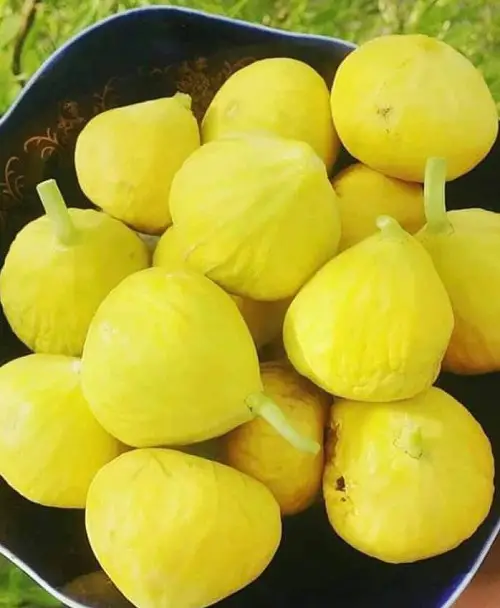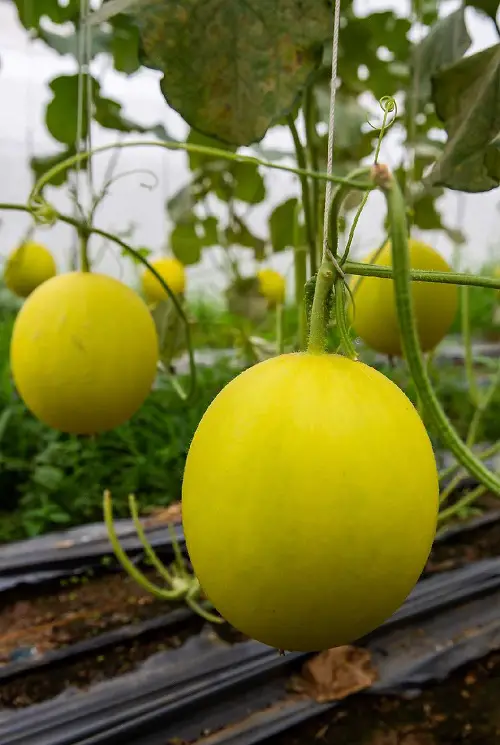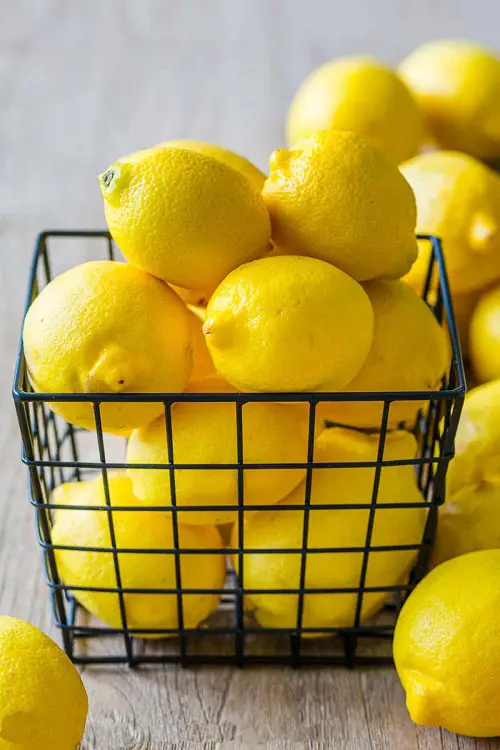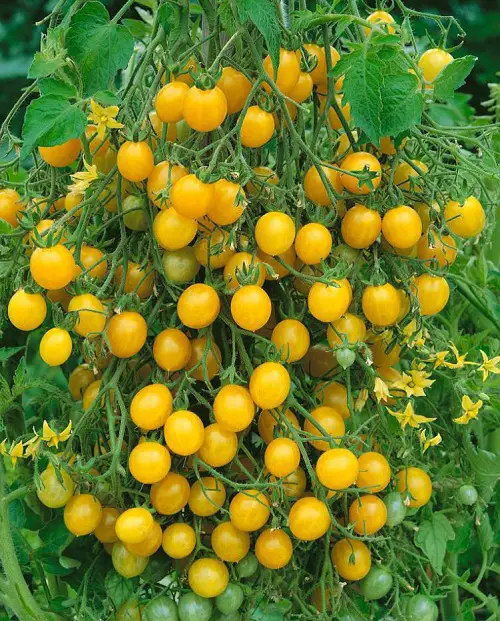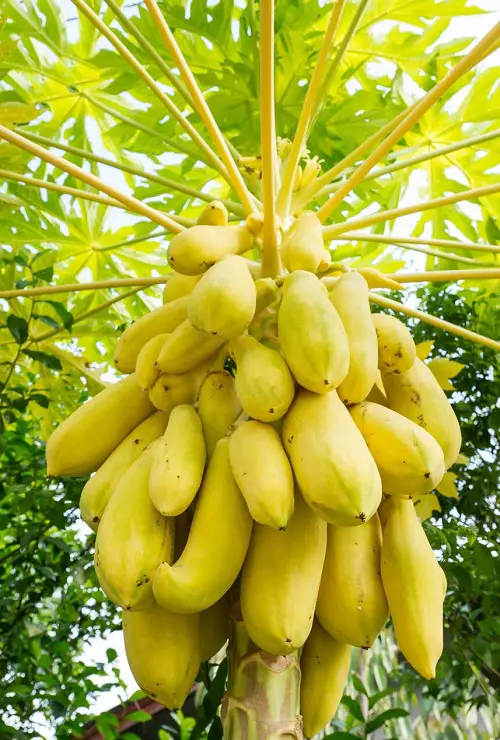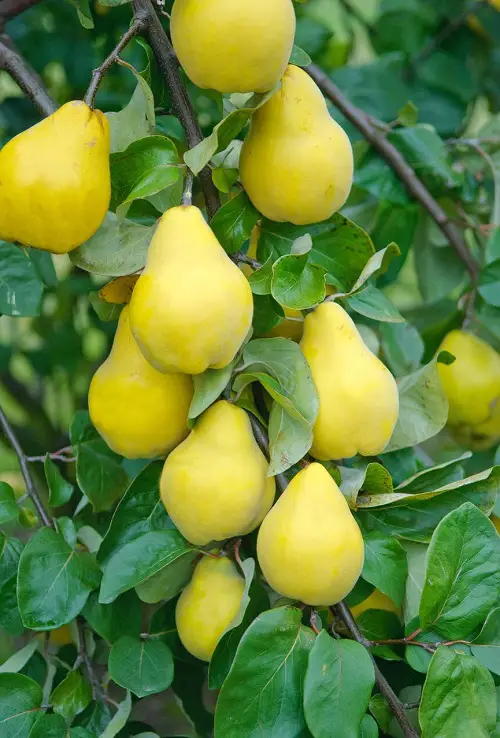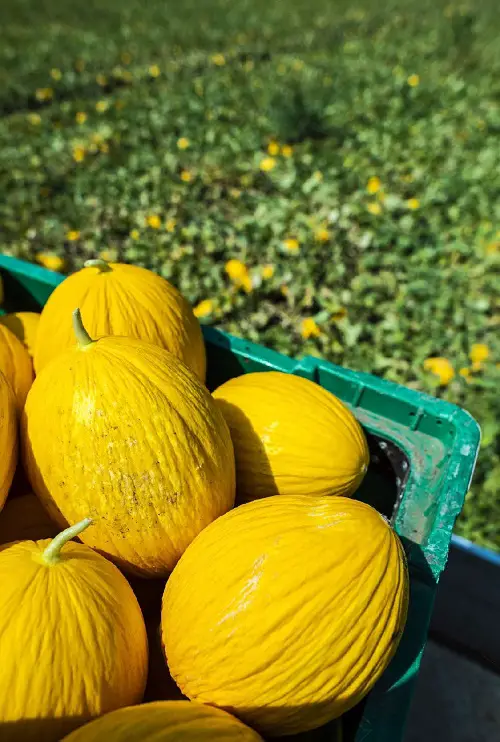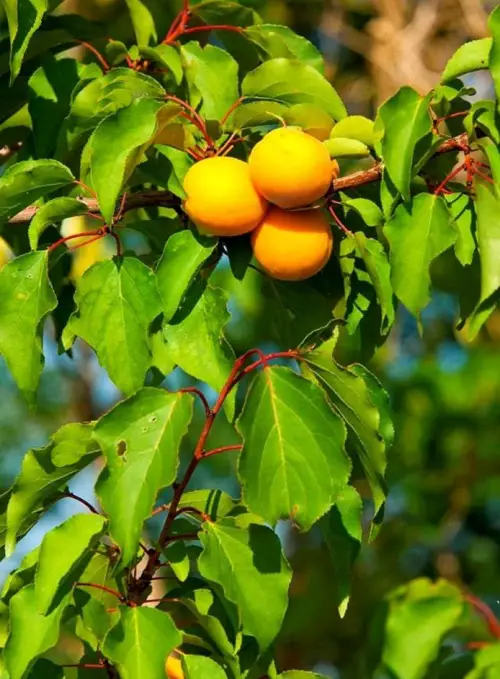Indulge in a burst of sunshine with the Best Yellow Fruits, packed with nutrition, flavor, and a touch of sweetness or tanginess.
Enjoy the taste of juicy and delicious Best Yellow Fruits, from sweet to tangy; these vibrant delights are packed with nutrition and flavor. Let’s discover the top picks for a colorful and healthy snack or meal.
Here are the Best Blue and Yellow Flowers
Best Yellow Fruits
1. Yellow Apple
Botanical Name: Malus pumila
The classic Yellow Apple packs a crisp bite and sweet flavor. Select a suitable apple variety, such as Yellow Delicious, Golden Delicious, or Yellow Newton.
How to Grow Yellow Apple: Plant apple trees in the spring or fall, at least two trees for cross-pollination.
Check out our article on growing apple trees in pots
2. Yellow Pears
Botanical Name: Pyrus communis
This type of pear is characterized by its yellow skin and juicy, sweet flesh, often used in fruit salads, desserts, and as a snack.
How to Grow Yellow Pears: Select a suitable pear variety such as Bartlett or Asian Pear. Plant pear trees in the spring or fall, at least two trees for cross-pollination.
Learn How to Grow Asian Pears
3. Yellow Fig
Botanical Name: Ficus carica
Yellow figs offer a sweet and nutty flavor. Select a suitable yellow fig variety, such as Golden Feather or Golden Fig. Plant fig trees in the spring or fall.
How to Grow Yellow Fig: Choose a location with well-draining soil and full sun.
Learn How to Grow a Fig Tree in a Pot
4. Yellow Cherry
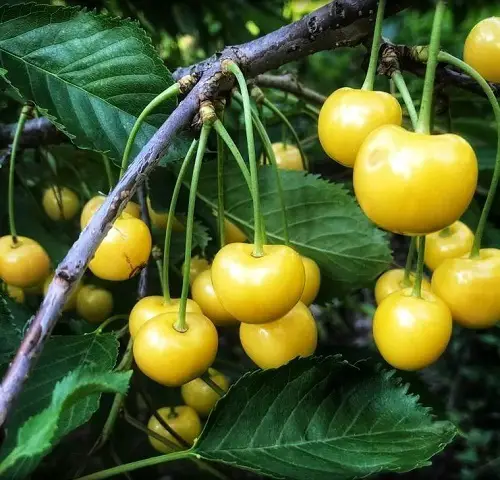
Botanical Name: Prunus avium
A yellow-skinned variety of sweet cherries with a sweet, juicy flavor. Select a suitable yellow cherry variety, such as Yellow Heart or Rainier.
How to Grow Yellow Cherry: Plant cherry trees in the spring or fall, at least two trees for cross-pollination.
5. Starfruit
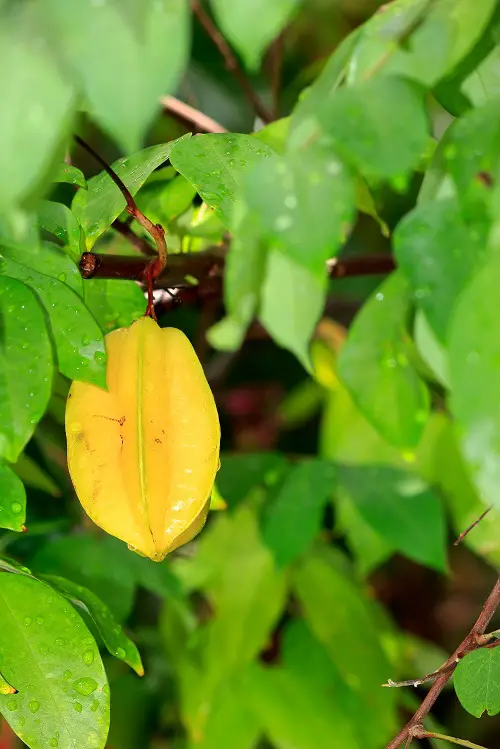
Botanical Name: Averrhoa carambola
The star-shaped yellow fruit adds a tropical twist to your garden with its crisp and sweet taste.
How to Grow Star Fruit: Learn how to grow star fruit
6. Yuzu
Botanical Name: Citrus junos
This Japanese citrus fruit with a tarty lemon-like flavor that is used in sauces, marinades, and as a garnish in Asian cuisine.
How to Grow Yuzu: Start with a young yuzu tree or grow from seed. Choose a sunny spot with well-draining soil.
7. Eggfruit
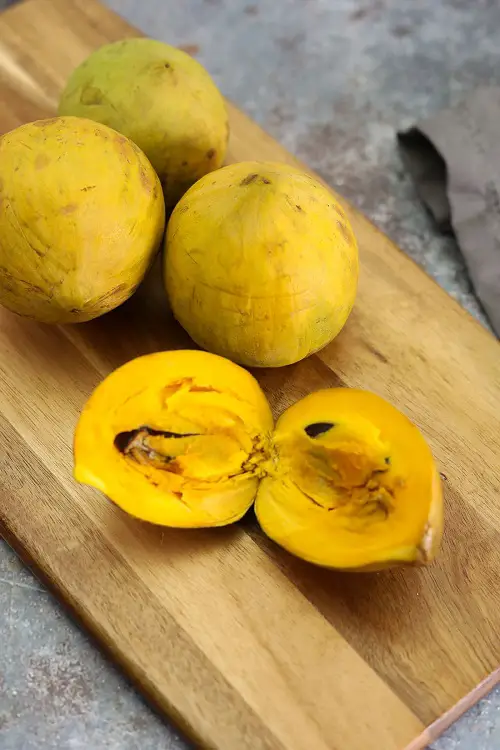
Botanical Name: Pouteria campechiana
The creamy and nutty Eggfruit is a lesser-known fruit in this selection, but worth trying.
How to Grow Eggfuit: Start with a young tree or grow from seed. Choose a sunny, well-draining location with moderate moisture and provide adequate support and prune to maintain shape.
8. Canary Melon
Botanical Name: Cucumis melo var. canariensis
The sweet and juicy canary melon adds a bright touch to any garden with its vibrant color.
How to Grow Canary Melon: Choose a sunny spot with well-draining soil, and start with seeds or young plants.
9. Marumi Kumquat
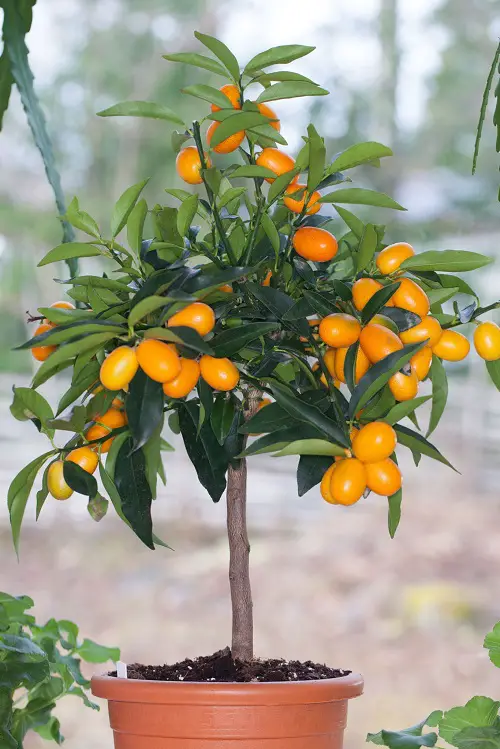
Botanical Name: Fortunella margarita
The tart and sweet Marumi Kumquat is a small citrus fruit with sweet, thin outer skin and tart inner pulp.
How to Grow Marumi Kumquat: Learn how to grow Marumi Kumquat in detail.
10. Barhi Date
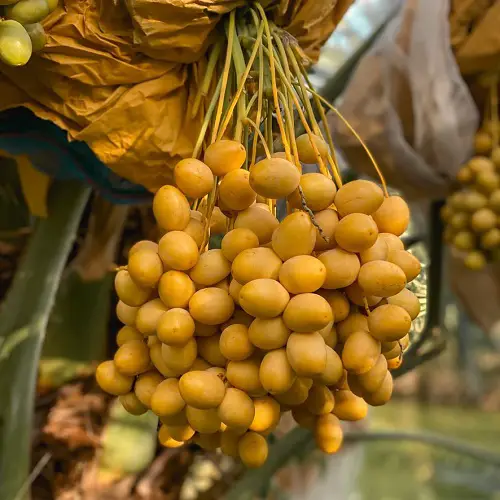
Botanical Name: Phoenix dactylifera
The soft and sweet Barhi Date is a staple in Middle Eastern cuisine and a great addition to any garden.
How to Grow Barhi Date: Acquire healthy Barhi date palm tree seedlings from a reputable nursery. Choose a suitable location with well-draining soil and full sun exposure.
Note: Growing dates requires patience and commitment, as it takes several years for the palm tree to bear fruit.
Learn if Dogs can Eat Dates
11. Grapefruit

Botanical Name: Citrus paradisi
With a tangy, bitter, and citrusy taste, the Grapefruit is another amazing plant with yellow fruits.
How to Grow Grapefruit: Choose a suitable location with well-draining soil and full sun exposure. Plant the tree in a hole that is twice as wide as the root ball and at the same depth as the root ball in the pot.
Here are the Best Green Fruits with Pictures
12. Yellow Dragon Fruit

Botanical Name: Hylocereus undatus
Like its pink counterpart, the sweet and juicy yellow dragon fruit adds a unique and exotic touch to any home.
How to Grow Yellow Dragon Fruit: Plant the cutting in a well-draining soil mix and water thoroughly. Provide support for the cutting, such as a trellis or stakes, as it begins to grow.
13. Lemon
Botanical Name: Citrus limon
Who doesn’t love Lemons for their sour, versatile, and zesty flavor? These are citrus fruits with a sour, acidic taste and yellow skin.
How to Grow Lemon: Learn to grow a lemon tree in a pot.
Learn How to Grow Lemon Trees from Lemon Leaves
14. Yellow Tomato
Botanical Name: Solanum lycopersicum
The sweet and juicy yellow tomato is a fun twist on the classic red variety. Lemon Boy, Dixie Golden Giant, and Dr. Wyche’s Yellow Tomato are the best yellow varieties.
How to Grow Yellow Tomato: Sow yellow tomato seeds or plant seedlings in the soil, spaced according to the variety’s recommended distance.
15. Papaya
Botanical Name: Carica papaya
The Papaya is a sweet and musky tropical delight with sweet, juicy flesh and yellow-orange color.
How to Grow Papaya: Learn how to grow papaya.
16. Golden Gooseberry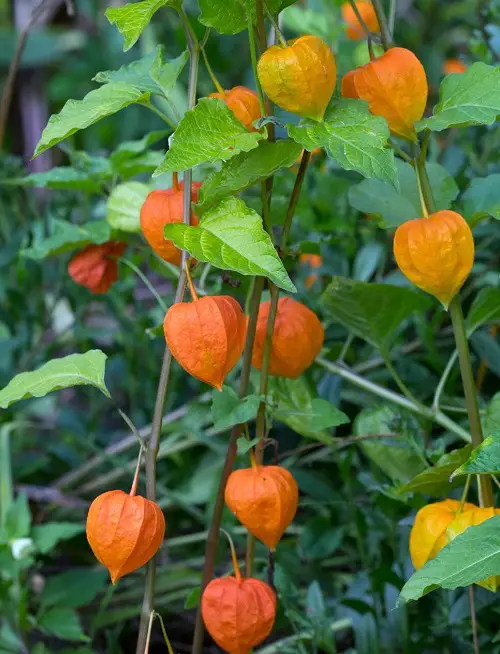
Botanical Name: Ribes uva-crispa
The tart and tangy Golden Gooseberry has incredible colors and amazing zesty fruit.
How to Grow Golden Gooseberry: Start sowing seeds in February or March; in May, plant outdoors in a sunny spot.
17. Pomelo

Botanical Name: Citrus maxima
The sweet and juicy Pomelo is a large citrus fruit of yellow that flourishes in the full sun.
How to Grow Pomelo: Grow pomelo in a moist, warm environment; it has a high demand for water.
18. Yellow Watermelon
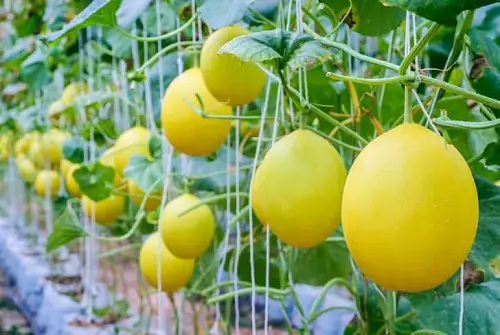
Botanical Name: Citrullus lanatus
Did you know that watermelons also came in vibrant yellow? These ones are incredibly juicy and sweet.
How to Grow Yellow Watermelon: Yellow watermelons prefer plenty of sunlight and well-draining, fertile soil.
Here are Different Types of Watermelons You Can Grow
19. Banana
Botanical Name: Musa spp.
The Banana is a tropical fruit with yellow skin and sweet, creamy flesh. It is used as a snack in smoothies and baking and is one of the healthiest fruits.
How to Grow Bananas: Learn how to grow banana trees in pots.
20. Mango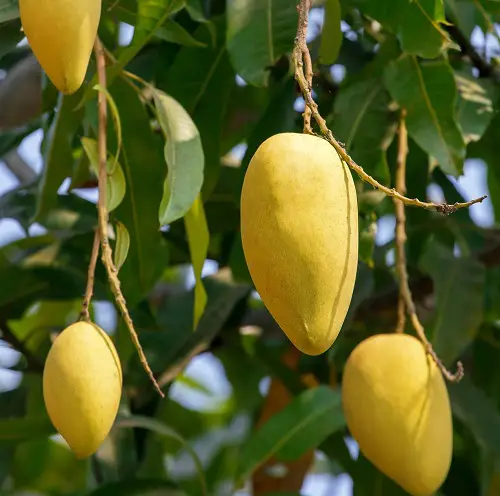
Botanical Name: Mangifera indica
The sweet and juicy Mango is a tropical favorite fruit that offers a refreshing taste. Many parts of the tree are used medicinally.
How to Grow Mango: Learn how to grow a mango tree in a pot.
Here are the Best Mango Varieties in the World
21. Golden Kiwi
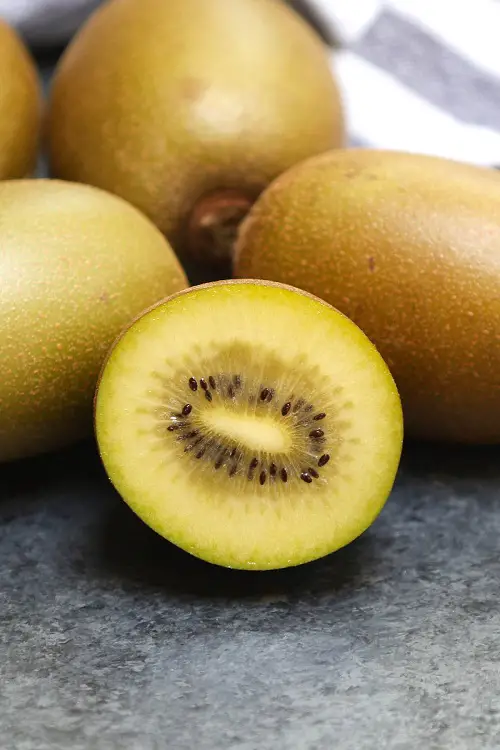
Botanical Name: Actinidia chinensis var. chinensis
The sweet and tangy golden kiwi adds a unique touch to any home with its amazing color.
How to Grow Golden Kiwi: Learn How To Grow Kiwi In a Pot.
22. Mirabelle Plum
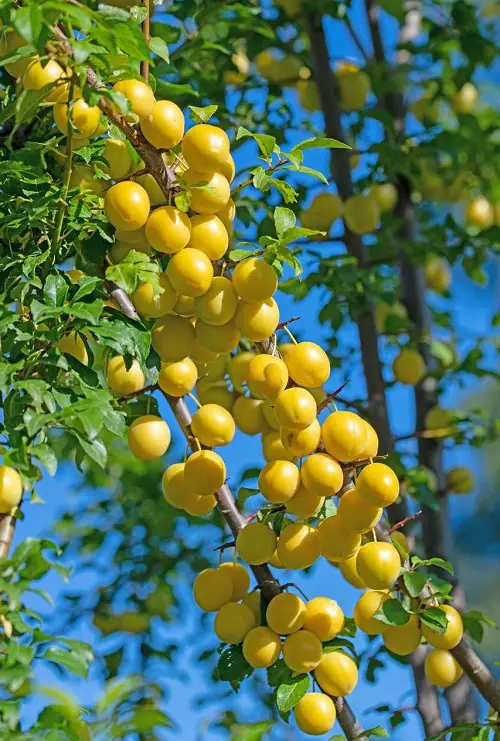
Botanical Name: Prunus domestica subsp. syriaca
The Mirabelle Plum might be small in size, but the sweet flavor it delivers is definitely big.
How to Grow: Plant the Mirabelle plum tree in spring or fall, allowing enough space for its mature size. Prune annually in winter to encourage fruit production and maintain tree shape.
23. Quince
Botanical Name: Cydonia oblonga
This deciduous small tree produces pear-like or round, light golden yellow fruits that are used in flavoring and preservation.
How to Grow Quince: Plant a quince tree in spring, allowing enough space for its mature size. Prune regularly to encourage branching and maintain the shape of the tree.
24. Canary Melon
Botanical Name: Cucumis melo var. canariensis
With its vast size and beautiful body with slight grooves, the Canary Melon is a wonderful yellow fruit.
How to Grow: Sow seeds directly in the ground after the last frost, or start them indoors a few weeks earlier. Space seedlings 2-3 feet apart.
Learn How to Grow Bitter Melon
25. Durian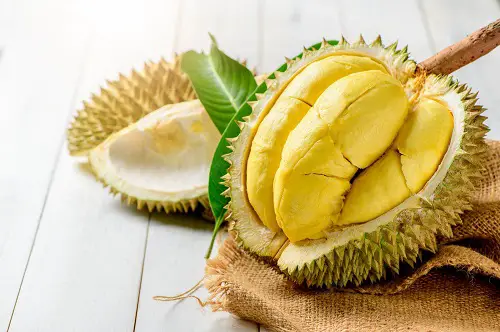
Botanical Name: Durio zibethinus
The divisive and pungent durian may not be for everyone, but its creamy texture and unique flavor are amazing.
How to Grow Durian: Propagate durian from seeds or young saplings. Choose a suitable location with well-draining soil and a warm climate. Prune regularly to promote healthy growth and flowering.
26. Golden Raspberry
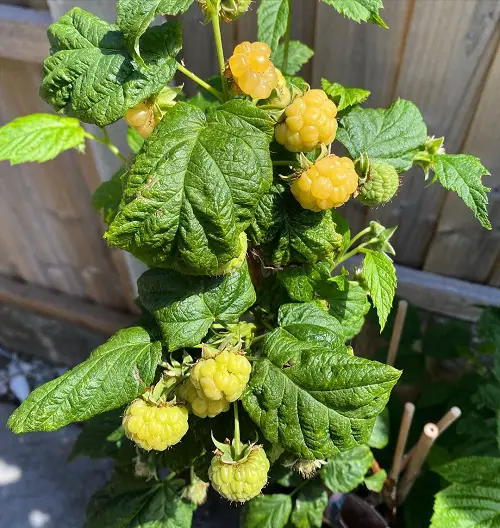
Botanical Name: Rubus idaeus
The Golden Raspberry is a variety of raspberries that has a yellow or golden-yellow color and is smaller in size compared to red raspberries, and has a sweet and tangy flavor.
How to Grow Raspberries: Learn everything about Growing Raspberries in Pots
27. Apricot

Botanical Name: Prunus armeniaca
A small to medium-sized fruit with smooth, fuzzy skin. They are sweet and juicy, with a tart taste and a firm flesh that softens as it ripens.
How to Grow Apricot: Choose a location with full sun and well-drained soil and select a suitable variety for your area. Plant in spring/fall, space trees 15-20 ft apart.
28. Loquat
Botanical Name: Eriobotrya japonica
The tangy loquat is a lesser-known fruit but adds a touch of beauty to the garden and sweetness to your plate.
How to Grow Loquat: Plant in full sun with well-drained soil, pH 6.0-7.0, Water regularly, and space trees 10-15 ft apart.
29. Pineapple
Botanical Name: Ananas comosus
Another tropical fruit with tough, spiky skin and sweet, juicy flesh. The center of the Pineapple is made up of tightly packed, individual sections surrounded by a sweet, fibrous pulp.
How to Grow Pineapple: Grow pineapples from a pineapple with this easy hack.
30. Cherimoya

Botanical Name: Annona cherimola
The Cherimoya is a creamy and sweet fruit with a smooth outer layer covered in round protrusions.
How to Grow Cherimoya: Grow cherimoya in a warm, frost-free climate in well-drained soil and full sun to partial shade. Water and fertilize regularly, protect from wind, and provide support as the tree grows.
31. Buddha’s Hand

Botanical Name: Citrus medica var. sarcodactylis
The fragrant and sweet Buddha’s hand is a unique citrus fruit, often used for its zesty aroma. The fruit has long, finger-like extensions with thin skin but no flesh or juice.
How to Grow Buddha’s Hand: Find a detailed guide on growing Buddha’s Hand.
32. Longan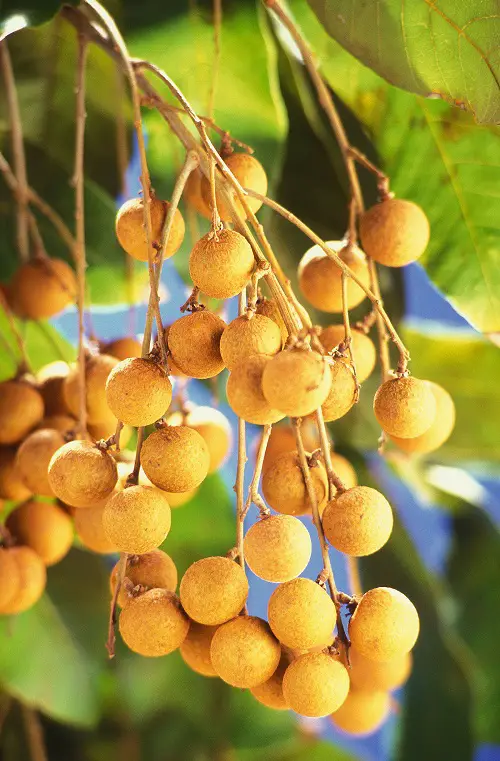
Botanical Name: Dimocarpus longan
A tropical tree fruit native to Southeast Asia with a sweet flavor often referred to as “Dragon Eye.”
How to Grow Longan: Grow longan in warm, humid, well-drained soil with full sun exposure. Water and fertilize regularly and prune for shape and fruit.
33. Oroblanco

Botanical Name: Citrus sinensis x paradise
The Oroblanco is a hybrid citrus with a sweet-tart flavor and seedless flesh.
How to Grow Oroblanco: Oroblanco requires eight or more hours of direct sunlight daily. Grow this plant in well-draining soil.
34. Calamansi Lime 
Botanical Name: Citrofortunella microcarpa
A small citrus fruit found in Southeast Asia, with a flavor combination of lime and lemon.
How to Grow Calamansi Lime: Calamansi limes can be grown indoors or outdoors in a sunny location with well-drained soil. Regular watering, fertilization, and pruning will encourage healthy growth and fruit production.
Learn about the Care and Growing of the Calamansi Tree
35. Lucuma

Botanical Name: Pouteria lucuma
A subtropical fruit native to South America, with a sweet, caramel-like flavor and vibrant yellow color.
How to Grow Lucuma: To grow lucuma trees, plant seeds in well-draining soil in a warm and sunny location, water regularly, and fertilize regularly for optimal growth.
36. Sapodilla

Botanical Name: Manilkara zapota
The Sapodilla is another tropical fruit native to Central America, with a sweet and sticky texture.
How to Grow Sapodilla: Have a look at this post for Growing a Sapodilla Tree.



